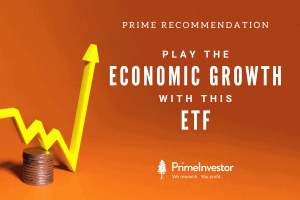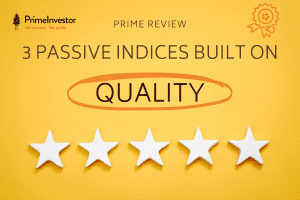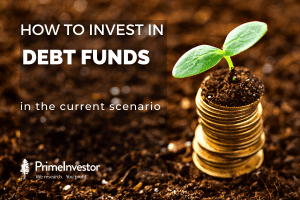
Prime Recommendation: Play the economic growth with this ETF
As India’s economic activity picks up pace after being in deep freeze during Covid, investors have been hunting for sectors that can ride this recovery.

As India’s economic activity picks up pace after being in deep freeze during Covid, investors have been hunting for sectors that can ride this recovery.

In this analysis, we look at indices on the ‘Quality’ factor. There are two NFOs running now – DSP Midcap 150 Quality 50 Index fund (there’s already the ETF version of this) and Aditya Birla SL Nifty 200 Quality 30. These two indices join the Nifty 100 Quality 30 index, on which there is an already existing ETF (from Edelweiss).

As per the above table, we are not yet in a bear market, though it would seem to be just round the corner. But what the data shows is that the period taken to recover from the onset of a bear market back to regaining the previous peaks can be as short as three months or as long as 74 months.

The world of passive investment options is a growing one, and the ETFs available now number over 100.
Because passive investing has gained such a name for itself, you may think that anything passive is a great investment. No. There are ETFs which make good investments and those that do not, just like with active funds.

Over the weekend, Motilal Oswal AMC has taken a couple of steps that affect investments in its US-based index funds. In this note, we explain what these steps are and how they affect your investments and our own recommendations.

Prime Strategy: How to invest in debt funds now?
If you had invested in an ultra-short debt fund like Axis Treasury Advantage 3 years ago, your returns would be 7.3% CAGR now. Not bad at all by today’s standards, right? If you invested in the same fund 2 years ago in November 2019, your returns would be 6% – still not terrible. But what if you had invested in this fund just a year ago?

one good way to de-risk your equity fund portfolio from a market fall would be to switch from funds following a momentum style of investing to those following a value or contrarian style or funds with a value-oriented approach. Value funds typically buy fundamentally sound companies that trade at a discount to their intrinsic value in the markets.

How to play the SDL bond opportunity?
It’s not an easy life for fixed income investors looking to earn decent yields today. With RBI regularly mopping up government securities through its G-SAP programme and also reining in yields on new issues, the 10-year government security has been caught in a range of 5.8 to 6.3 per cent for the last one year, despite elevated inflation.

Balanced Advantage Funds for SWPs – Last week saw the NFO of SBI Balanced Advantage Fund close – and collect a whopping Rs 14,500 crore. That puts it in third place, in terms of size, in the balanced advantage/dynamic asset allocation category. A lot of the attraction here for investors, seeded by the distributors and the fund itself, centered around the scheme’s ability to offer monthly income.

A recent addendum by Aditya Birla Sun life suggested that investors rollover some of the AMC’s FMPs that are maturing. The reason was that given the low-rate scenario, investors are unlikely to get good interest rates outside once they exit. And that staying invested would provide indexation benefit for capital gains and earn higher returns.
But some investors raised the doubt on whether the FMPs under question were in trouble. We therefore looked at their portfolios. They had high-quality AAA-holdings are unlikely to have had any pressure on repayment. In other words, there does not appear any credit related rollover compulsion.

Many of our customers have written to us asking whether they should continue with the Franklin Templeton funds that they hold. People are worried not just about debt funds, but about the future of their equity funds as well. These worries are not misplaced given recent developments at the fund house.
As readers of this space know, we have been tracking the performance of this fund house from a time well before the crisis relating to the decision to wind up six debt schemes unfolded. So, for us here at PrimeInvestor, this question of what to do with your holdings is not tough to answer.

Perpetual bonds have caused some sleepless nights for fund managers after SEBI’s circular earlier this month. On March 10th, SEBI issued a circular capping the debt scheme exposure to perpetual bonds at 10% and also laying down new rules how these bonds should be valued in debt scheme portfolios. We wrote a short take on it last week suggesting that you wait for clarity. SEBI has now come up with one more circular offering some clarification.
Hold On
You are being redirected to another page,